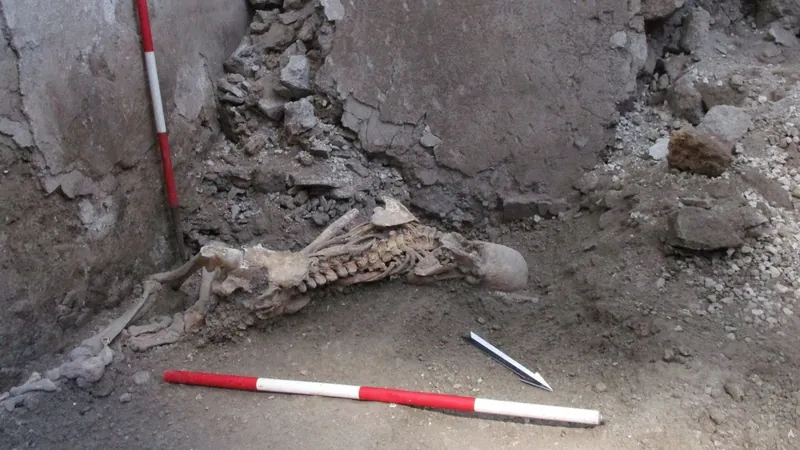
Earth Welcomes New Mini-Moon... But It’s Not What You Think!
2024-09-23
Author: Wei
From September 29 to November 25, Earth is set to host a temporary visitor—a mini-moon known as 2024 PT5. This intriguing space rock, approximately 10 meters in diameter, is an asteroid pulled in from the Arjuna asteroid group. Although it won't be visible to the naked eye or small telescopes due to its faintness, larger telescopes will have the opportunity to catch a glimpse of it.
NASA describes moons as “naturally formed bodies that orbit planets,” and mini-moons fit into this category as they are asteroids or comets that Earth’s gravity temporarily captures. While small mini-moons are frequent visitors, the visibility of larger specimens is a rare treat. In fact, 2024 PT5 marks just the fifth known mini-moon captured by Earth.
Orbit or Flyby?
To classify a mini-moon, astronomers look at its behavior while in Earth's vicinity. A mini-moon becomes a “temporarily captured orbiter” if it successfully completes at least one orbit around our planet before moving back to its regular solar orbit. Unfortunately, 2024 PT5 will fall into the “temporarily captured flyby” category as it won't manage that full circuit.
The Origins of Mini-Moons
Mini-moons primarily come from a vast pool of near-Earth objects (NEOs), which include asteroids and comets that come within 1.3 times the Earth’s distance from the Sun. 2024 PT5 and a previous mini-moon, 2022 NX1, originate from the same group of asteroids, the Arjunas. Intriguingly, Arjuna is not just a scientific term; it is a pivotal character in the Hindu epic, Mahabharata.
A Historical Perspective on Mini-Moons
The very first recognized mini-moon was 1991 VG, which visited in late 1991 and departed in early 1992, also measuring around 10 meters in diameter. Another notable case, J002E3, discovered in 2002, was initially thought to be a mini-moon but was later identified as the third stage of an Apollo Saturn V rocket, showcasing the intricate task astronomers face in classification.
Another example, 2006 RH120, initially suspected to be an artificial object, was confirmed to be a natural mini-moon later on, captivating astronomers with its presence from July 2006 to July 2007. More recently, 2020 CD3 held the title of the longest-captured mini-moon, staying with Earth for over two years before escaping in May 2020.
The Future of Mini-Moons
The ongoing search for mini-moons continues to intrigue scientists, with models suggesting that at least one mini-moon smaller than one meter is present in Earth’s orbit at any one time. Despite being elusive due to their size and faintness, projects dedicated to scanning the skies for asteroids, like the Asteroid Terrestrial-impact Last Alert System (ATLAS) and Catalina Sky Survey (CSS), play a critical role in identifying these fascinating cosmic phenomena.
As we approach the observation capabilities of the upcoming Vera C. Rubin Observatory and its Legacy Survey of Space and Time (LSST), the prospect of uncovering more mini-moons and deepening our understanding of these transient companions to Earth only enhances the excitement in the field of astronomy. Keep your telescopes ready—you never know when the next mini-moon might drop by!



 Brasil (PT)
Brasil (PT)
 Canada (EN)
Canada (EN)
 Chile (ES)
Chile (ES)
 España (ES)
España (ES)
 France (FR)
France (FR)
 Hong Kong (EN)
Hong Kong (EN)
 Italia (IT)
Italia (IT)
 日本 (JA)
日本 (JA)
 Magyarország (HU)
Magyarország (HU)
 Norge (NO)
Norge (NO)
 Polska (PL)
Polska (PL)
 Schweiz (DE)
Schweiz (DE)
 Singapore (EN)
Singapore (EN)
 Sverige (SV)
Sverige (SV)
 Suomi (FI)
Suomi (FI)
 Türkiye (TR)
Türkiye (TR)